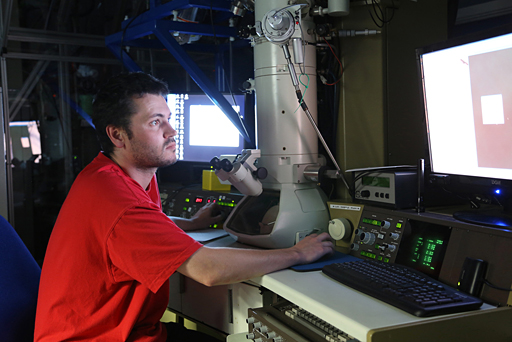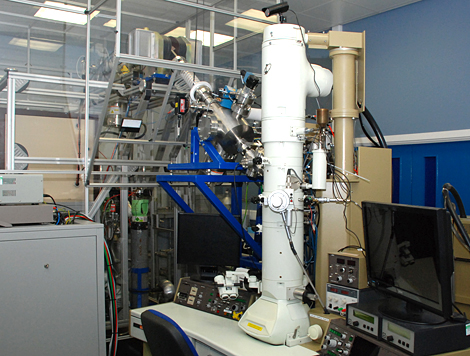£850k to look at radiation damage in nanoporous nuclear materials

Fri, 01 May 2015 11:29:00 BST
“...a solution is to dispel defects and gas atoms so that the material is able to recover from the damage – in effect repair itself...”
 SCIENTISTS are investigating the use of man-made sponge-like materials as a new way of solving important engineering challenges for future generations of nuclear reactors, such as the accumulation of gas, which can lead to structural weakness. Now, a research project at the University of Huddersfield has been awarded major funding to explore the possibilities.
SCIENTISTS are investigating the use of man-made sponge-like materials as a new way of solving important engineering challenges for future generations of nuclear reactors, such as the accumulation of gas, which can lead to structural weakness. Now, a research project at the University of Huddersfield has been awarded major funding to explore the possibilities.
The Engineering and Physical Sciences Research Council (EPSRC) has granted £678,000 towards the cost of a three-year, £856,000 project titled Radiation damage in nanoporous nuclear materials. The project is headed by Dr Jonathan Hinks (pictured right), a Senior Research Fellow at the University of Huddersfield, which will receive £387,000 of the funding. A post-doctoral researcher is to be appointed.
The three-year project is a collaboration with the University of Surrey – which receives £291,000 – where the expertise of Professor Roger Webb in computer modelling will complement the experimental data gathered at Huddersfield using its highly-advanced facility named Microscope and Ion Accelerator for Materials Investigations (MIAMI - pictured below).
Dr Hinks explained that major problems can be caused by the displacement of atoms – by high-energy neutrons – and the accumulation of gases – from nuclear decay and fission events – in the materials used for the construction of nuclear reactors.
 A solution is to dispel defects and gas atoms so that the material is able to recover from the damage – in effect, repair itself – and an ideal way to do this is to create surfaces that act as “sinks” where this can happen.
A solution is to dispel defects and gas atoms so that the material is able to recover from the damage – in effect, repair itself – and an ideal way to do this is to create surfaces that act as “sinks” where this can happen.
“Surfaces are fantastically good at getting rid of these problems and nanoporous material has huge amounts of surface because the entire substance is made like a sponge, meaning the surface-area-to-volume ratio is massive,” said Dr Hinks.
“With a cube of solid material you have a lot of volume, but your only surface is its six sides. However, if a substance is all surface, you have plenty of opportunity to get rid of your problems.”
Nanoporous materials

But could a material with a sponge-like structure have sufficient strength to be used for nuclear components?
Dr Hinks said that studies have suggested that the mechanical properties of nanoporous materials are very similar to those of their bulk equivalents. “You wouldn’t necessarily have it as a barrier layer, but for structural materials inside reactor cores, nanoporous materials are strong enough,” he added.
- The new award for nanoporous materials research is the latest in a sequence of EPSRC grants that have confirmed the University of Huddersfield as a key centre for the analysis of nuclear materials. They include £889,839 for a project headed by Professor Stephen Donnelly and Dr Hinks that will investigate the damage caused by irradiation of the materials that are used for the construction of reactors and for the long-term safe disposal of radioactive waste. It has also been announced that the University will receive £3.5 million in order to construct MIAMI II, an advanced electron microscope that has dual ion-beams, meaning it will be an even more valuable research tool than the existing MIAMI I, which was co-developed by Professor Donnelly and Dr Hinks.







